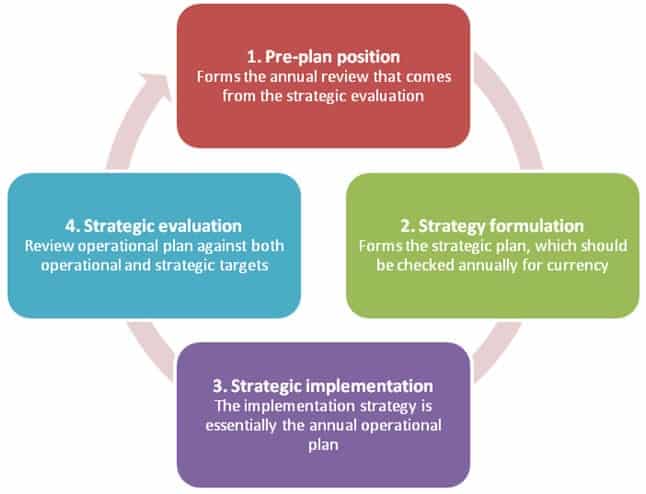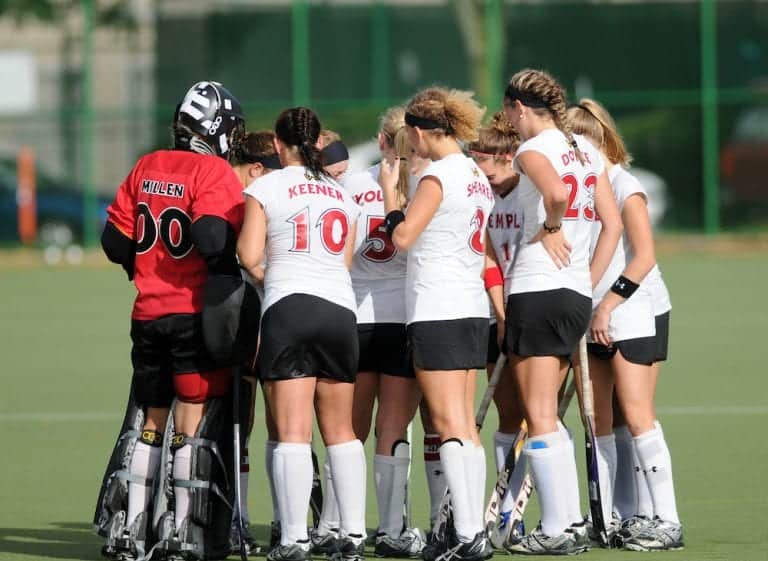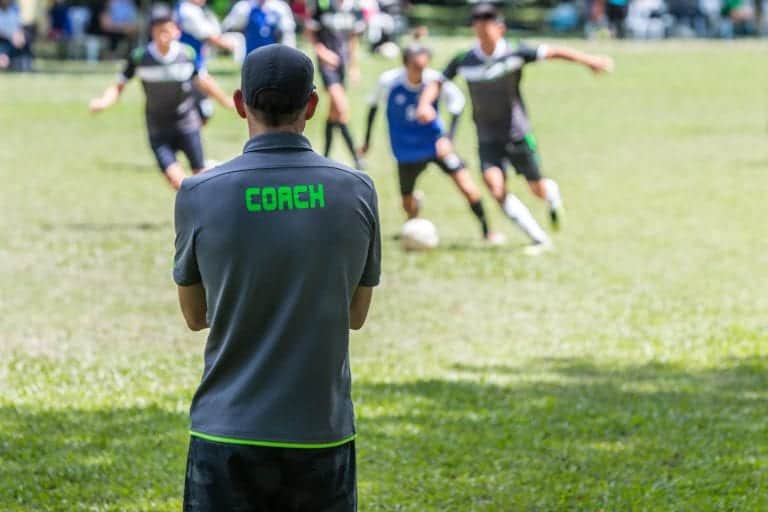By Jason Drummond
The following content has been adapted from a research paper written pursuant to a NRL high-performance Coach accreditation assessment task.
Within a high-performance program it is necessary to function within a high-performance plan. The function of any high-performance program plan is to facilitate the increased performance of players both individually and as a team (Canavan, 2011). The plan provides a blueprint for the way an organization will achieve this. It includes both operational and strategic planning components.
In order to develop an effective high-performance program plan it is first necessary to examine the theoretical underpinnings of program planning and management in order to discern what constitutes best practice. To facilitate this process, academic literature was reviewed for the purpose of determining the systems, processes and structures that facilitate high-performance.
In Best Practice in Performance Management Bedford and Malmi (2009) indicate that high-performance management systems typically have the following characteristics:
- Formalized planning processes that outline quantitative measured goals and detailed plans of actions
- Strategy implemented and controlled through a combined use of budgets and performance measures
- Performance management systems are used intensively to encourage information sharing, debate and to direct attention towards new opportunities
- Use of mechanisms such as task forces, project committees and teams that cut across traditional hierarchical relationships to encourage information sharing
- Use of policies and procedures that limit the scope of subordinate behaviors in a non-invasive way, such as codes of conduct
- Emphasis on human resource procedures and development of shared organizational values, which provide a foundation for decision making
- Use of performance measurement systems as a means of accountability and evaluation
- Use of budgets and performance measurement systems to evaluate past actions and develop new strategic directions
- Encouraged subordinate participation in planning processes
- Benefited from a focus on human capital and organizational values
As indicated above, high-performance management systems require formalized planning processes. Formalized planning processes utilize planning as a formal tool that aims to design the future operations of an organization. Effective planning outlines:
- The aims and objectives trying to be achieved
- The strategies used to meet the objectives
- The evaluation methods used to measure performance success (Department of Sport and Recreation, 2008)
To be effective the plan must also include the expectations, policies and procedures that govern the overall organization. In other words, the philosophy and framework in which the sporting organization operates. Furthermore, planning is a continual process that should be documented and referred to regularly, reviewed and adapted as internal and external influences changes and objectives are achieved (National Organizational Development Network, 2011c).
It is important to recognize that while an organization may produce separate documents or supplementary plans depending on its size and structure, it should have one planning process to achieve a common strategic direction (National Organizational Development Network, 2011c). The steps involved in an effective planning process as are illustrated in Figure 1.

Obviously, before actually writing any plan it is necessary to understand the environment in which the organization operates. Without an accurate assessment of the organization’s pre-plan position, it is difficult to establish a starting point for developing a new plan. One technique for doing this is a SWOT analysis (Canavan, 2011; NSW Department of Sport and Recreation, 2001; NSW Department of Sport and Recreation, 2002). This forms the introduction by providing facts and figures about the current status of the organization. It is a snapshot of the organization showing critical information on the standing of the organization at the commencement of the plan.
Another useful technique to inform planning is utilizing a performance environment survey (Canavan, 2011). Essentially this is a survey designed to elicit information from players that will assist in creating an environment that will facilitate optimal performance.
Having established an understanding of the pre-plan position then next step in the planning process is strategy formulation. During this step it is necessary to either review or identifying the vision, mission and objectives for both long and short term and generate the key performance indicators against which performance can be measured (National Organizational Development Network, 2011a). Objectives need to be specific, measureable, achievable, related to vision and time bound (National Organizational Development Network, 2011a; Nichols & Callard, 2012; NSW Department of Sport and Recreation, 2002). Objectives and strategies are commonly categorized in terms of distinct key performance areas (KPAs). Strategy formulation should be derived from an inclusive approach with key stakeholders as this assists with buy-in from them during the implementation stage (Bedford & Malmi, 2009; National Organizational Development Network, 2011c; NSW Department of Sport and Recreation, 2002).
The next step in the planning process is defining how the strategy is going to be implemented. This is a significant stage as it determines the allocation of available resources towards achieving the desired goals (National Organizational Development Network, 2011b). Essential here is defining the relationships within a sporting organization and clearly identifying the people that are responsible for the various activities undertaken (Thomson, 2011; National Organizational Development Network, 2011c).
The final step in the planning process is evaluation. Monitoring and reporting procedures need to be put into the place to ensure progression towards stated objectives (Department of Sport and Recreation, 2008). Reporting should focus on performance and trends and help in determining any necessary change. Further, it is essential that specific timelines have been allocated for the implementation of strategy (NSW Department of Sport and Recreation, 2002; 2005; Department of Sport and Recreation, 2008). This process ordinarily lists the tasks that were proposed, identify the extent to which they were completed, state the reasons for failing to achieve any of the performance targets and identify the implications of this for future planning (National Organizational Development Network, 2011c). The critical question to be answered during this process is whether or not the strategies implemented achieved the desired results (National Organizational Development Network, 2011b). In this way evaluation feeds back into planning, so that goals or objectives and strategies can be refined and in some cases rewritten (Department of Sport and Recreation, 2008). Therefore the plan remains a dynamic working tool rather than a stagnant document that sits on a shelf untouched.
Having outlined the planning methodology it is also necessary to outline other basic inclusions or elements of a good plan. The NSW Department of Sport and Recreation (2001; 2002; 2005) include these:
- Major assumptions – assumptions made to determine goals, objectives, strategies and action plans.
- Critical success factors – the factors that significantly impact on the Club’s ability to be successful (Gates, 2010).
- Vision – it is essential for an organization to have a vision. Without vision, the organization has nothing to strive towards.
- Contingencies – every contingency cannot be anticipated, however, it is possible to account for the risks that may be faced and to work out a contingency plan. It is also critical to learn from mistakes, any plan must reflect new learning.
- Change – it is important that any major changes affecting the organization are reflected within the plan. It is an evolving document and will change as the organization develops.
At Athlete Assessments, we’re here to provide you with excellence in service and to help you be your best. If there is anything we can assist you with, please Contact Us.
References List:
Bedford, D and Malmi, T (2009) Best Practice in Performance Management – A collaborative research project between CPA Australia and the University of Technology, Sydney (UTS), CPA Australia Ltd, Melbourne, Vic, viewed 22 December 2012 < http://www.cpaaustralia.com.au/cps/rde/xbcr/cpa-site/Best__practice_in_performance_management230909pdf.pdf >
Canavan, B (2011) Developing a high-performance Program, RLCM DVD, Speaking at the high-performance Coaching Conference.
Department of Sport and Recreation, (2008) Management Plan Guide, 2nd Edition, Government of Western Australia, viewed 20 December, 2012 <http://www.dsr.wa.gov.au//assets/files/Facilities/Management%20Plan.pdf>
Gates, L (2010) Strategic Planning with Critical Success Factors and Future Scenarios: An Integrated Strategic Planning Framework, Carnegie Mellon University, viewed 3 January, 2013 <http://www.sei.cmu.edu/reports/10tr037.pdf>
National Organizational Development Network, (2011a) Characteristics of Strategic Planning, Australian Sports Commission, viewed 20 December, 2012 <http://www.ausport.gov.au/supporting/clubs/governance/planning>
National Organizational Development Network, (2011b) Implementing your strategic Plan, Australian Sports Commission, viewed 20 December, 2012 <http://www.ausport.gov.au/supporting/clubs/governance/planning>
National Organizational Development Network, (2011c) The Planning Process, Australian Sports Commission, viewed 20 December, 2012 <http://www.ausport.gov.au/supporting/clubs/governance/planning>
Nichols, AR, Callard, J 2012, Focused for Rugby – A proven approach for peak performance, Human Kinetics, Champaign, IL.
NSW Department of Sport and recreation (2001) The strategic business plan – A guide to preparation for not-for-profit sport and recreation organizations, Australian Sports Commission, viewed 20 December, 2012 < http://www.ausport.gov.au/supporting/clubs/resource_library/club_management/strategic_planning/template>
NSW Department of Sport and Recreation (2002) Corporate Governance – strategic business planning, Australian Sports Commission, viewed 20 December, 2012 <http://fulltext.ausport.gov.au/fulltext/2002/nsw/r_a-z_cgbuspln.asp#produce>
NSW Sports and Recreation (2005) Running Your Club – Planning: Content inclusions, Office of Communities Sport and Recreation, viewed 20 December, 2012 <http://www.dsr.nsw.gov.au/sportsclubs/ryc_plan.asp>
Thomson, I (2011) The Coach as a Manager, RLCM DVD, Speaking at the NSWRL Senior Coaches Conference, Narrabeen.
Recommended Articles
In sports teams such as football, synergy can become tricky when one player is outperforming the team’s result. In a situation where one of your athletes has achieved great individual statistics but at the end of the game your team has lost, your team has not achieved synergy. Your team is allowing the athlete to operate at a more individual level without the additional support of the team, and this is undermining the potential for synergy.
The GRIP Model is a performance tool any team can use, be it sports teams or management teams to improve their team’s effectiveness and promote their sports team development. In our article on using the GRIP Model for Pre-Season Preparation we discussed how to incorporate this into your sports team in the critical pre-season environment. This article incorporates the GRIP Model tailored to those working in a management team.
Every coach has their unique approach or style to coaching. Whether or not this leads to a high-performance coaching style, where their athletes are reaching their full potential, comes down to a few core elements.…
Understanding the importance of sport and exercise psychology is paramount to getting better results on the field, in the pool or on the court. Often though, coaches find the topic daunting and therefore put it in the “too hard” basket. Other coaches employ the services of a sport psychologist to assist their athletes and miss important benefits of a holistic coaching approach. In this article, we define what sport psychology is and what aspects are best incorporated into training and competition day by the sports coach.









